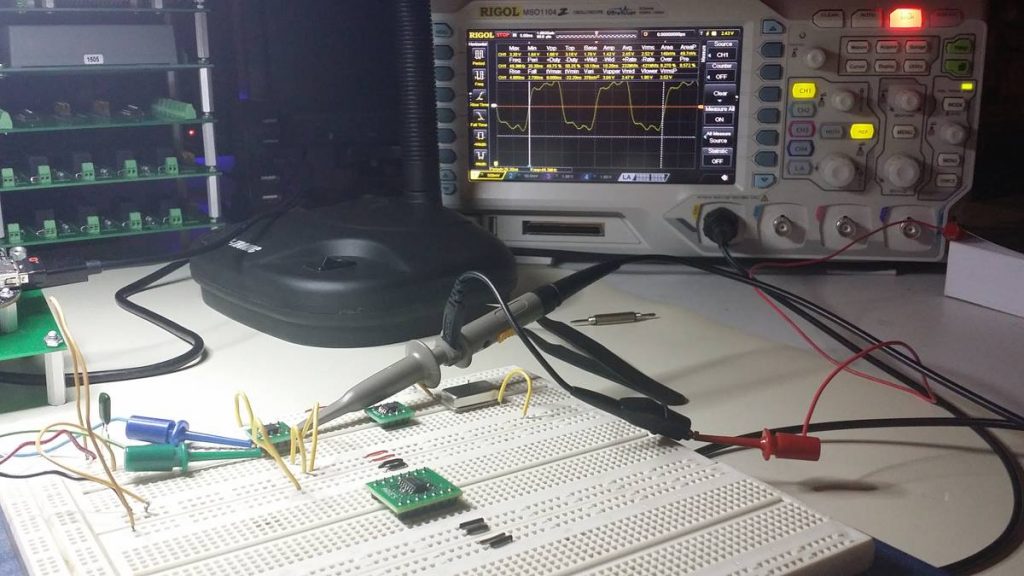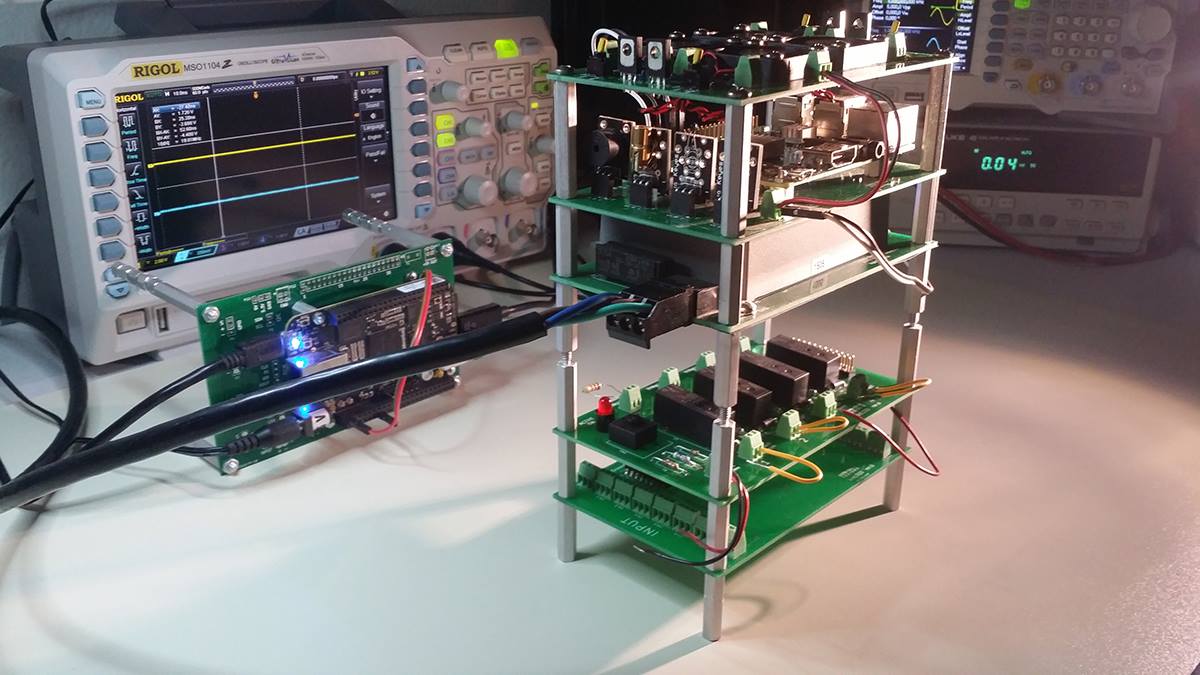Here I am chasing harmonics to drain them to ground. Literally. This is what I spent time doing today. Set up a draft schematic by happenstance with a strong drink, sunglasses, and music too loud.
See that square wave on the scope? That’s exactly what’s supposed to happen given by the drawing. Only, the waveform is somewhat messy. Too many long leads, unstable harmonics, spurious noises, and other monkey business artifacts going on.
On one hand, it is completely unclear what the specific contributing causes are. Yet, on the other hand, it’s perfectly clear what likely needs the most attention in terms of clean up and the use of the specified reference design’s filters. I can see what’s on the other side before the trial concept is finished.
















